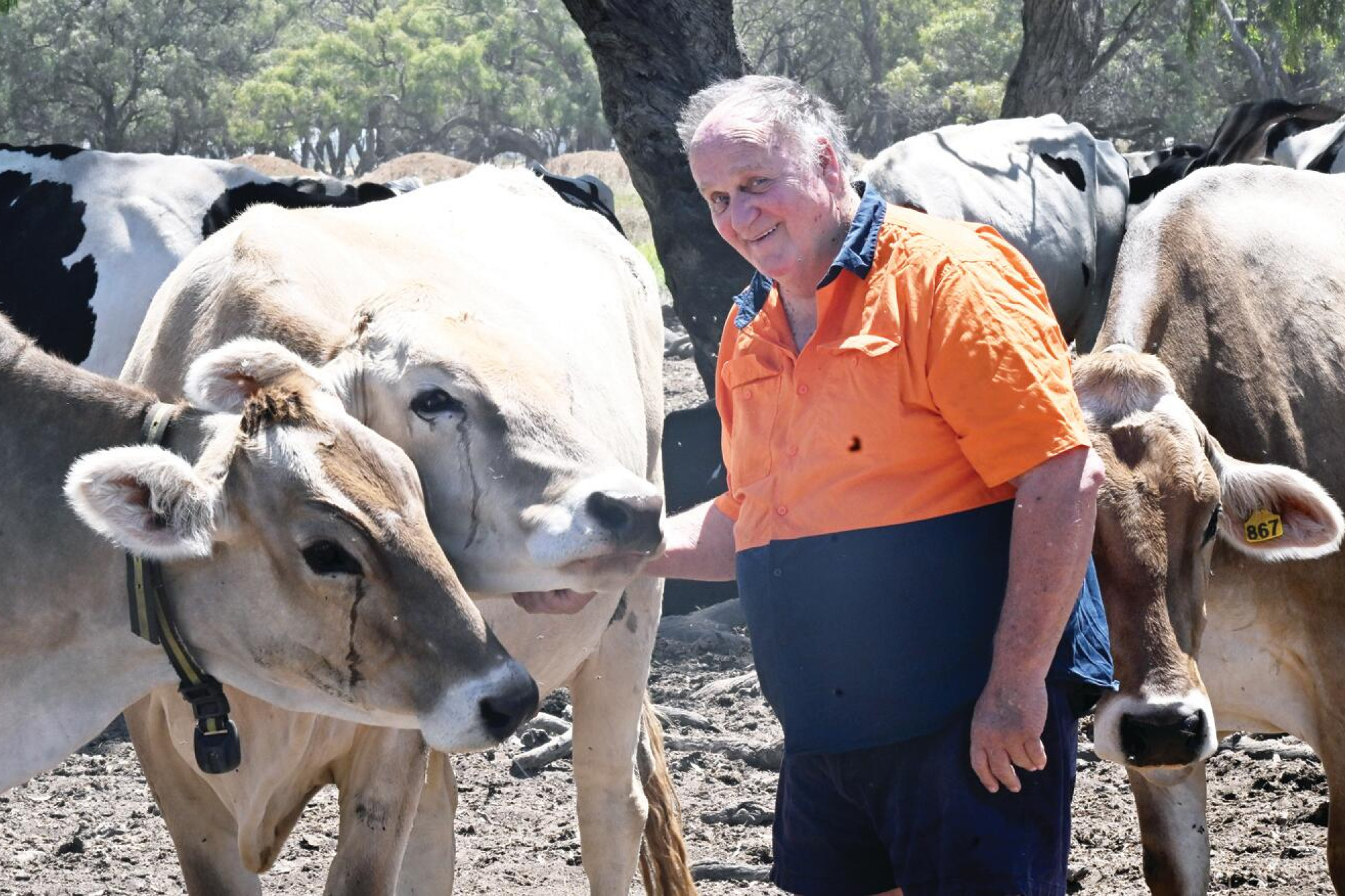Agriculture
11 February, 2025
Bill yodels Swiss breed virtues
By CHRIS EARL BILL GOVETT travelled Australia in the early days of convincing dairy farmers to try the brown Swiss breed. The challenge to convince them that the bigger-framed cow would boost their milk production. A more robust and reliable breed...

By CHRIS EARL
BILL GOVETT travelled Australia in the early days of convincing dairy farmers to try the brown Swiss breed.
The challenge to convince them that the bigger-framed cow would boost their milk production.
A more robust and reliable breed that lives longer, was his message to commercial farmers at field days.
The Tandarra dairy farmer started his journey with brown Swiss 40 years ago after “trusting a good mate ... a jersey breeder in the United States”.
“We brought some semen out from the US, put it with our jersey cows and were very impressed with what we got,” Bill said.
“They gave us a bigger cow and significantly more production ... and they had a a good temperament.”
That was 40 years ago and Bill was a pioneer of the breed in Australia, helping establish a national brown Swiss association becoming its inaugural president and heading to the United States to speak at an international conference.
That drive saw Bill’s contribution grow exponentially, according to Brown Swiss Australia that last month awarded Bill life membership during a break in judging at International Dairy Week in Tatura.
The setting to recognise Bill was apt. He had spearheaded the breed’s inclusion in the judging schedule in 1997.
There was the Australian Brown Swiss Digest that he edited while also maintaining the breed’s studbook and registration of hundreds of cows that the association said built “a robust base for the breed in Australia”. A year after seeing brown Swiss added to IDW’s schedules, he was behind the importing of more than 60 embryos from the United States for use in Australian herds.
Semen and embryos mostly came from the state of Wisconsin, Bill said. “It’s a fairly central area for the stud dairy industry over there”.
“Now there are very few jerseys left in Australia. It’s either Friesian or brown Swiss,” he said.
Bill said that in the 1980s, there were misconceptions when brown Swiss was being marketed as a dual-purpose cow.
He said the breed Braunvieh (Swiss Brown) originated in the Alpine region of Europe.
Today, the breed is selectively bred for dairy qualities only, and its draft and beef capabilities have been lost.
Bill’s knowledge of the breed saw him in demand as a judge. But true to his mantra when heading up the national association, the future of the brown Swiss is always invested in the next generations.
“I don’t get involved in the society now. There has been a succession to younger people than me ... when I first became involved in the jersey breed you had to be in your 60s before you were recognised,” he said.
“We are now seeing younger people involved in Brown Swiss Australia and it’s happening in other breeds too.”
Among that next generation is Bill’s son Ben who has continued to achieve show ring success for the Tandara Brown Swiss stud, gaining respect as a judge and will follow in his father’s footsteps as a speaker at this year’s International Dairy Federation summit in Chile in October.
“The thing about the show ring, is you get the cows out and people see them and that’s been important for us over the last 40 years,” said Bill.
The life membership award credits Bill with “a lifetime of dedication, visionary leadership and enduring contributions to the brown Swiss breed that have left an indelible mark on the industry ... (and) reflects his extraordinary legacy and the profound impact he has had on the breed and the community”.
But Bill thinks there should have been a second life membership certificate presented in Tatura. “That would have been to my wife Judy who has shared the journey. While I was off around Australia and overseas, she was the one at home milking the cows,” Bill said.
“Establishing the breed in Australia was not just me. There was Judy and everyone else in the stud industry who saw the benefits of brown Swiss.”
When Ben heads to Chile later in the year, it will be Bill and Judy milking the cows, aiming to keep up each cow producing an average 10 litres of milk a day. “They’re a proper dairy cow.” he said.